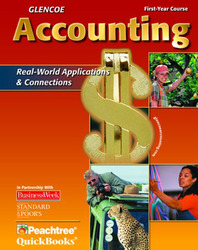
Glencoe AccountingUnit 6: Additional Accounting TopicsWebQuest Internet ProjectLegislating a New Path for Accounting IntroductionThe Sarbanes-Oxley Act (SOX), signed into law in 2002, applies to publicly held companies and the accounting firms that audit them. The law was passed in response to corporate failures and accounting irregularities that resulted in job losses, massive bad debts, and deep plunges in the values of certain stocks ad retirement plans. The TaskThe Sarbanes-Oxley Act is a 66-page document that addresses everything from audit partner rotation to criminal penalties for altering documents. The SOX contains elements that affect corporate boards, auditors, corporate management, and public accounting firms. Many of these public accounting firms are organized as general or limited liability partnerships. Your task is to prepare a report about public accounting firms and the services they offer, the advantages of a limited liability partnership, and the ways in which the Sarbanes-Oxley Act has impacted the operation of the public accounting firm. You will also investigate how corporate ethics and investor confidence has changed since the legislation was passed. The ProcessTo successfully prepare your presentation you will need to complete the following items.
Summary of the Sarbanes-Oxley Act of 2002 www.aicpa.org/info/sarbanes_oxley_summary.htm Will Sarbanes-Oxley Improve Ethics? www.allbusiness.com/periodicals/article/172153-1.html Limited Liability Partnership http://en.wikipedia.org/wiki/Limited_liability_partnership General Partnership www.toolkit.cch.com/text/P12_4225.asp KPMG, LLP www.hoovers.com/kpmg-l.l.p./--ID__117186--/free-co-factsheet.xhtml Anchin, Block & Anchin LLP www.hoovers.com/anchin,-block-&-anchin/--ID__123363--/free-co-factsheet.xhtml Earning the Investor's Trust www.globalagendamagazine.com/2005/johnthain.asp SOX: Not So Bad After All? www.businessweek.com/bwdaily/dnflash/aug2005/nf2005081_7739_db016.htm
To improve your report, consider the following questions and suggestions:
Here are some suggestions for finishing your report:
When a group of people with an entrepreneurial spirit decides to create a business, it often begins operations as a partnership. The partnership business organization requires no special legal requirements, and partners pay personal income taxes on their share of the net income of the business. Question:
When partnerships are liquidated, a variety of tasks must be completed. The process involves selling all noncash assets, allocating gains or losses from those sales to capital accounts, paying creditors, and distributing remaining cash to partners. Each step requires journal entries by the accountant. Question:
The Enron accounting scandal and failure of the company affected Arthur Anderson employees, Enron's creditors and investors, Enron employees and executives, the accounting industry, and the nation's economy. Certain principles vital to the accounting profession and to corporate management were violated, leading to one of the most publicized scandals in accounting history. Question:
|  |















